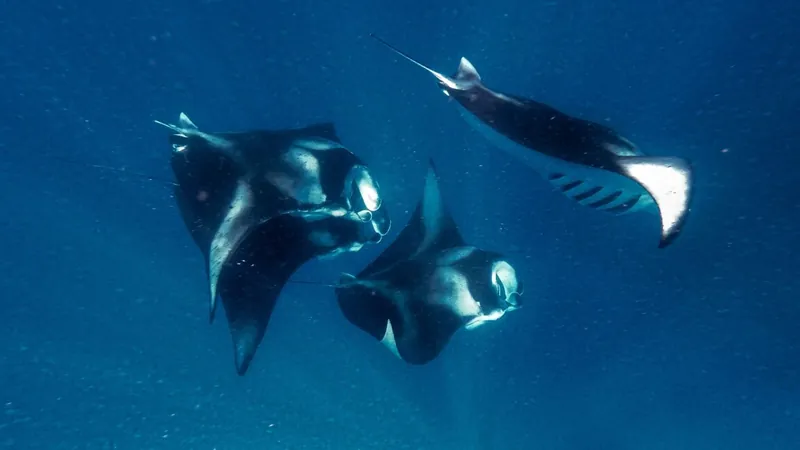
How Manta Rays are Revolutionizing Robotics and Water Purification
2024-12-31
Author: Ming
Introduction
Manta rays, with their sleek, wing-like bodies and graceful swimming techniques, are now becoming the inspiration behind groundbreaking innovations in soft robotics and advanced water filtration systems. These incredible marine creatures not only glide effortlessly through our oceans but also exhibit remarkable feeding habits that scientists are keen to replicate in technology.
Soft Robotics Inspired by Manta Rays
Researchers from North Carolina State University and the University of Virginia have developed an extraordinary soft robot that mimics the movements of manta rays. This cutting-edge creation can swim as fast as 6.8 body lengths per second—nearly double the speed of its predecessor, making it the fastest soft robot to date. Not only is it faster, but it is also more energy-efficient, capable of swimming in various directions—upward, downward, and along the surface—just like a real manta ray.
The engineering marvel utilizes a unique motion known as mobuliform swimming, enabling it to generate powerful thrust through fluid, wave-like movements of its silicone wings. The researchers explain that this intricate swimming pattern creates vortices that propel the robot forward while conserving energy. In practical applications, this design allows the robot to retrieve objects from the bottom of a tank, showcasing its multifaceted capabilities.
Water Filtration Innovations
But the fascination with manta rays doesn't stop at robotics. A team at MIT has drawn inspiration from the rays’ extraordinary gills to enhance commercial water filtration systems. Manta rays are natural filter feeders, capturing plankton with precision as they swim along. Their gill structures are ideal for allowing water in while efficiently extracting oxygen, and scientists are mimicking these attributes to improve water filtration technology.
The researchers focused particularly on mobula rays, finding that their balance between rapid water intake and targeted particle capture makes them the ideal template for new water filters. By creating 3D-printed filters that replicate the anatomical structures of these rays, the MIT team discovered that they could design filtration systems that effectively separate water from larger particles while creating vortices that guide contaminants away.
Conclusion
The implications of this research are broad and significant. As the world faces increasing water scarcity and pollution challenges, innovations inspired by manta rays serve as a beacon of hope in the quest for cleaner water solutions. The ability to streamline the filtration process while maintaining environmental balance holds the promise of transforming industrial water systems.
In conclusion, while manta rays might inhabit a world a little different from ours, their biological efficiencies offer invaluable lessons in design and functionality. The incredible advancements stemming from these majestic creatures not only point to a future of more efficient robots but also hint at a potential revolution in how we manage our planet's water resources. Is nature the ultimate designer? As these innovations unfold, it seems the answer may be a resounding yes.


 Brasil (PT)
Brasil (PT)
 Canada (EN)
Canada (EN)
 Chile (ES)
Chile (ES)
 Česko (CS)
Česko (CS)
 대한민국 (KO)
대한민국 (KO)
 España (ES)
España (ES)
 France (FR)
France (FR)
 Hong Kong (EN)
Hong Kong (EN)
 Italia (IT)
Italia (IT)
 日本 (JA)
日本 (JA)
 Magyarország (HU)
Magyarország (HU)
 Norge (NO)
Norge (NO)
 Polska (PL)
Polska (PL)
 Schweiz (DE)
Schweiz (DE)
 Singapore (EN)
Singapore (EN)
 Sverige (SV)
Sverige (SV)
 Suomi (FI)
Suomi (FI)
 Türkiye (TR)
Türkiye (TR)
 الإمارات العربية المتحدة (AR)
الإمارات العربية المتحدة (AR)